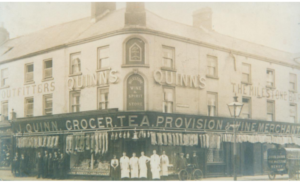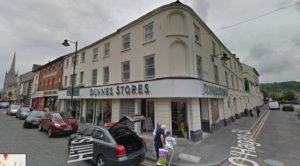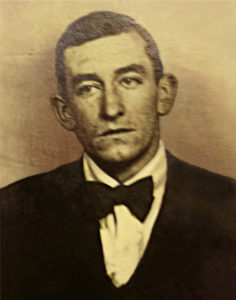For a couple of months I’ve been trying to establish just how Quinn family from Atticall, Kilkeel, County Down is related to me. I can report now that I’ve solved at least part of the puzzle. The DNA test that I took with Ancestry.com a few years ago links me to the Quinn family and I made that discovery yesterday. More on that later.
A little background
As I’ve written earlier, John Quinn established the first grocery store in Newry in County Down known as the Milestone in 1909. He ended up doing quite well in Ireland opening up grocery stores in various locations in County Down. My great grandmother Mary Rogers’ sister, Catherine (Kate), listed him as her cousin and her closest relative living in Ireland when she immigrated to the U.S. in 1910. Here is a link to my earlier post if you would like to read more: catherine-rogers-murphy-cousin-john-quinn

My grandfather’s cousin, Mary C. O’Rourke revealed in a video taken in 1986 that she was playmates when she was in Ireland with two of John and Mary Quinn’s (Fitzsimmons) oldest sons – John and Patrick. John and Patrick later changed their names to the Gaelige version – Sean and Padraig – and fought for Irish independence in the early 1920s. Sean died in the Irish Civil war in 1923 and Padraig was injured and lost a leg in the same conflict. Padraig went on to become a successful medical doctor in Ireland.
Taking another look
Just recently I went back and looked and my great grandfather John’s records. In the 1891 England census he is listed as a boarder in Birkenhead in a home occupied by the Sloan family, also from County Down. I suspect my great grandfather was a relative of the Sloan family. Also listed as a boarder is a Richard Quinn from County Down. John Quinn had a brother named Richard and Richard’s age listed in the census is 20, born the same year as John Quinn’s brother Richard. Hence, I believe, they are the same person. I don’t believe Richard is related to my great grandfather, only to my great grandmother’s family. I now think it is a possibility that Richard Quinn may have introduced my great grandfather to his future wife, my great grandmother Mary Rogers while they were all living in the Liverpool area.
Continue reading “Ancestry DNA test helped me solve a puzzle”



